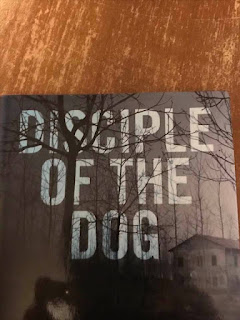One of the most significant disputes in the writing world is the argument of show vs. tell. Or, show don't tell.
What does that even mean?
Well, stealing from Wikipedia...
Show, don't tell is a technique used in various kinds of texts to allow the reader to experience the story through action, words, thoughts, senses, and feelings rather than through the author's exposition, summarization, and description.
Fascinating. Sound fair?
I suppose.
More steals from the internet, this time from How to Turn Bland Sentences Into an Enthralling, Full-Color Story by Henneke."
To let readers experience your story, show rather than tell:
- Telling means giving a brief, factual statement.
- Showing means using sensory details and describing actions to direct a mental movie in your reader's mind.
For instance:
Telling is: She was tired.
Showing is: She yawned.
Telling is: She is hungry.
Showing is: Her stomach rumbles.
Well, that's pretty basic. And I think I do that more often than not, although I'll the readers of my fiction decide that.
Still, when whole segments are nothing but showing feelings, flashbacks, associating events to the main character's own life - it can get a bit much.
That's what happens in the novel above. It was done entirely in the show style. At first, I didn't mind it. But then it got old, and I just wanted the writer to GET ON WITH THE STORY.
There has to be a blend. In my History of the Trap, there are a few chapter segments where the main character is attending school council meetings, and I've been told that those are examples of tell. I understand, but much of the book is told from the protagonist's perspective, as a first-person journal. The school council chapters are a way of getting the readers to experience the broader world of the Trap, beyond what the first-person narrator sees every day.
To me, writing is not show don't tell. It's show AND tell, like we used to do in pre-school and Kindergarten.
Stealing once again from the internets Dictionary:
a teaching method, used especially in teaching young children, in which students are encouraged to bring items they have selected to class and describe them to their classmates.
It takes a village of techniques. There is no one path.
I am tired.
I yawned.
You get the drift.
If not, I'll try to show/tell you more later.

No comments:
Post a Comment